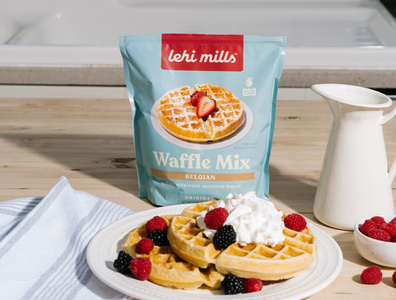No matter how much experience you have in baking, you should now understand the significance of flour and how to prepare it with the other components while producing the dough for various baked items. If you have a baking mix available, using the complete starting mixture will not be necessary. Numerous firms offer baking mixes, which are readily available at grocery stores. You can prepare your own baking mix at home and store it in a chosen container. However, you should remember that homemade baking mixes are best used right away. Now, without further ado, let’s examine the ingredients that comprise a baking mix:

Flour
Flour is, more or less, the backbone of it all, and different types of flour can be used in this regard – rice flour, wheat flour, and so on. As per function, flour gives weight and form to every baked good as it swells when the gluten [it contains] reacts with water. So, it is safe to say that there can be no baking mix without flour in the first place.
Sugar
Baking is a sophisticated science, and even the most basic recipes require a careful weighing and proportioning of the various components. Sugar is one of the most essential components in baking, as it serves a number of essential functions throughout the process. To begin, sugar helps to tenderize baked foods, which ultimately results in a more pliable and airy product. Second, it contributes sweetness, an important component of a variety of sweet treats. Third, sugar contributes to the browning and caramelization of the baked goods outside, which results in a deliciously crisp edge to the product. Lastly, sugar plays a vital role in the process of stabilizing egg foam, which is necessary for the production of cakes that are light and airy. In a nutshell, sugar is an indispensable component of every baking mix, and the significance of its part in the process must not be overlooked.
Salt
If sugar is already in the baking mix, why add salt [you may ask]? – It’s all down to ensuring a balance in taste. Moreover, the use of salt in a baking mix is informed by the need to strengthen the gluten network to further make the dough or batter steadier. It is also possible for salt to reduce the rate at which leavening occurs. Again, where yeast is used as a leavening agent, salt acts to slow down the rate of fermentation.
Shortening
Shortening is usually added to a baking mix to boost the attainment of fluffy baked products. A shortening is any fat that remains solid at room temperature – it is hydrogenated (vegetable) fat. Additionally, shortening makes the dough workable for a baker and ensures that you have a crispy product.
Leavening agents
Leavening agents like baking powder, baking soda, yeast, etc., are usually added to the baking mix. And, as you already know, they are in to make the dough rise. They impose air pockets on baked goods, with a solid texture obtained.